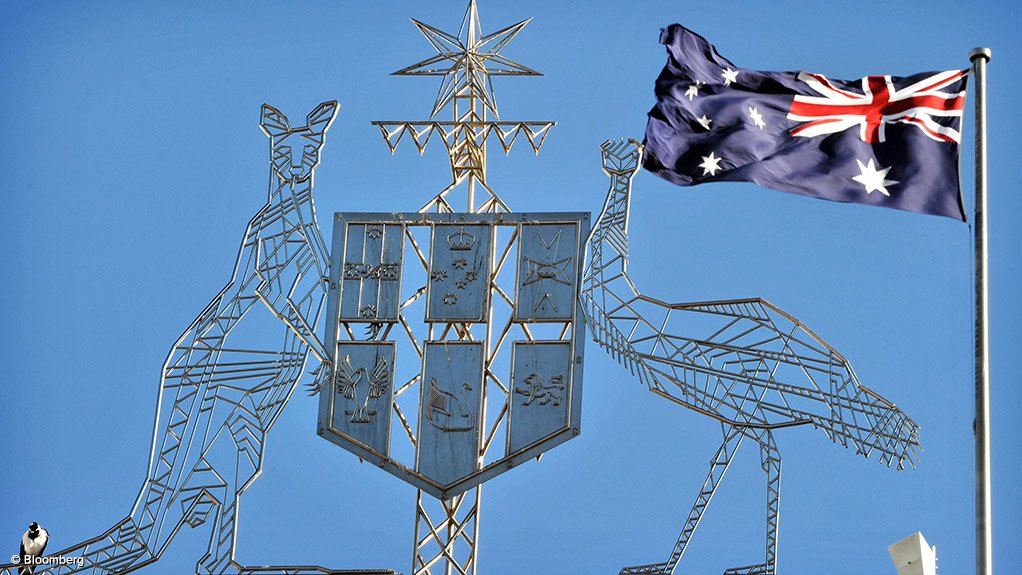PERTH (miningweekly.com) – The Australian resources sector has welcomed the federal Budget, particularly a A$28.7-million investment in east coast gas security, and over A$70-billion to 2021 on transport infrastructure across Australia.
Minister for Resources Matt Canavan said on Wednesday that the A$28.7-million east coast gas development programme would target faster development of onshore gas fields to meet Australian demand, while also focusing on a fair return to landholders.
“This programme is an investment in the future of manufacturing and the future of Australian jobs,” Minister Canavan said.
“It will help secure the domestic gas market against possible supply shortfalls in coming years, and enable large gas-intensive consumers to secure supplies on more acceptable commercial terms.
“The programme will expand the approach taken by the South Australian Plan for Accelerating Exploration initiative to other states and the Northern Territory. It builds on the strong action the Coalition government has taken already to ensure Australians have access to more gas at an affordable price. This includes the Gas Supply Strategy and the successful implementation of the Gas Industry Social and Environmental Research Alliance research model in Queensland and New South Wales.”
Canavan noted that the new programme will support projects that provide gas to domestic users and activities that accelerate gas supply from significant resources.
“Funding will be subject to the removal of regulatory restrictions, like moratoria on onshore conventional gas developments. Victoria has a blanket ban in place and the Northern Territory has a moratorium in place that are preventing any onshore gas development, despite preliminary assessments that both regions have substantial gas reserves.
“The Australian government will work cooperatively to encourage exploration and identify new gas supplies, but we expect the states and territories to show the same commitment to Australia’s domestic gas supply.”
The 2017-18 Budget also includes A$15.3-million in funding to measure and detect changes across the Australian landscape over time.
“Digital Earth Australia will transform almost three decades of existing satellite imagery of the Australian continent and coastline and make it freely available,” Canavan said.
“When fully operating, Digital Earth Australia will provide new information for every 10 m2 of Australia, every five days, enabling insights into issues such as water availability, the development of our regions and cities and the productivity of agricultural land.
“The Australian and state and territory governments will be able to use Digital Earth Australia as an evidence base to improve the design, implementation, and evaluation of policies and programmes.”
The Minerals Council of Australia (MCA) said on Wednesday that the new Budget will support stronger economic growth and improved living standards by investing in infrastructure, regions, skills, housing and essential services.
MCA CEO Brendan Pearson noted that the Budget outlook for a pick-up in growth to 3% over the next two years, which would see the economy expanding by close to its full potential, is good news for Australian households and businesses.
“The Budget’s forecasts highlight the critical role played by Australia’s mining and resources sectors in delivering economic growth and jobs.
“Treasury expects resources exports to grow by 8% in 2017/18 and 5% in 2018/19. This strong expansion will underpin growth in Australia’s overall outbound trade.
“Three commodities – iron-ore, coal and liquefied natural gas – are expected to account for around 70% of all resources exports as mines and gas projects built in recent years expand to their full production capacity,” Pearson said.
The MCA has welcomed both the east coast gas development programme and the focus on infrastructure, but it said that it was disappointed that the government had not chosen to extend the Exploration Development Incentive Programme.
“With Australian minerals exploration expenditure declining by A$2.15-billion, or 60%, over the last five years, the government should consider new policy measures to overcome the tax asymmetry whereby junior explorers with no taxable income are unable to access the immediate deduction for exploration,” Pearson said.
The Queensland Resources Council has, meanwhile, also welcomed the A$28.7-million investment into the east coast gas market, saying it would go a long way to deliver understanding into how much the New South Wales and Victorian markets were relying on Queensland gas.
The Australian Petroleum Production & Exploration Association (Appea) has also welcomed the new spend on gas supply, with CEO Malcolm Roberts pointing out that industry is capable of delivering that supply, provided state governments stopped their political games.
“Victoria needs to remove its moratorium on conventional onshore gas development and restart the discussion about unconventional gas on an honest, scientific basis. New South Wales has created a new, elaborate regulatory regime but we are still waiting for acreage to be released; nearly all the state remains closed to exploration. The moratorium on hydraulic fracturing in the Northern Territory is also locking up significant new gas supply,” Roberts said.
“While the gas market has tightened, putting pressure on local industry and families, States have allowed rising regulatory costs and restrictions to stifle development; exploration has slumped to its lowest level in thirty years.
“The only genuine, lasting solution to the tight east coast gas market is more supply. More supply will boost liquidity and competition in the market, putting downward pressure on prices. We have ample resources in Australia to supply domestic and export markets, we should be using those resources.”
Edited by: Creamer Media Reporter
EMAIL THIS ARTICLE SAVE THIS ARTICLE
ARTICLE ENQUIRY
To subscribe email subscriptions@creamermedia.co.za or click here
To advertise email advertising@creamermedia.co.za or click here













